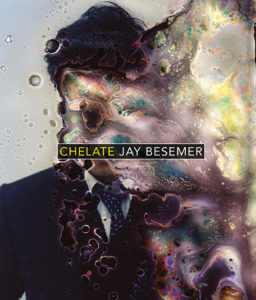 Jay Besemer and I once collaborated on a performance/workshop called “Restrictive Andragogies and Ex-Citation.” We were both at a stage in our teaching careers in which we were challenged by the way we were expected to approach our composition students. We were in the orbit of teaching at a junior college (although Besemer had recently moved away from the institution) where commas were often given more weight than content.
Jay Besemer and I once collaborated on a performance/workshop called “Restrictive Andragogies and Ex-Citation.” We were both at a stage in our teaching careers in which we were challenged by the way we were expected to approach our composition students. We were in the orbit of teaching at a junior college (although Besemer had recently moved away from the institution) where commas were often given more weight than content.
My part of the performance involved creating cut-up poems from instructor copies of spiral bound writing handbooks. The serendipitous juxtaposition of this game was how I could find my resistance to an overly prescriptive writing environment. Besemer’s resistance took the form of citations. He found a way to use the formal rules to craft a set of poems.
The indexical nature of this work is recalled in his recent collection Chelate. Yet there is something more mature and complex in these poems. Chelate, noun, verb, and adjective, are scientific terms relating to forming a bond. In the poems, each phrase represents an ephemeral event or observation bound by a colon (or set of colons) to the next phrase. The resulting poems are not the results of clinamen, but are instead the result of spooky attraction and emotional gravity.
Phrases haunt each other in much the same way our past selves haunt our present self. They are both integrated yet separated by an ethereal membrane. In one poem, Besemer writes “friends, there are some book you will not want to read : we dictate the phrases : not everyone can render honor to mighty nations…” His gaze widens through desire and inability, providing a personal trajectory through narrative fragments and phrases.
Individually and collectively, Chelate is dependent on juxtaposition, on the sensation moving from clause to clause, poem to poem. Use of parataxis and the objective correlative is not an uncommon move in contemporary poetry. The power to create emotion and narrative through the arrangement of ideas remains a powerful and seductive technique. Perhaps the essence of the collection is that Besemer uses it not for effect but as a scaffolding principal for deeper connection.
Chelate
Jay Besemer
Brooklyn Arts Press
ISBN: 978-1936767496









